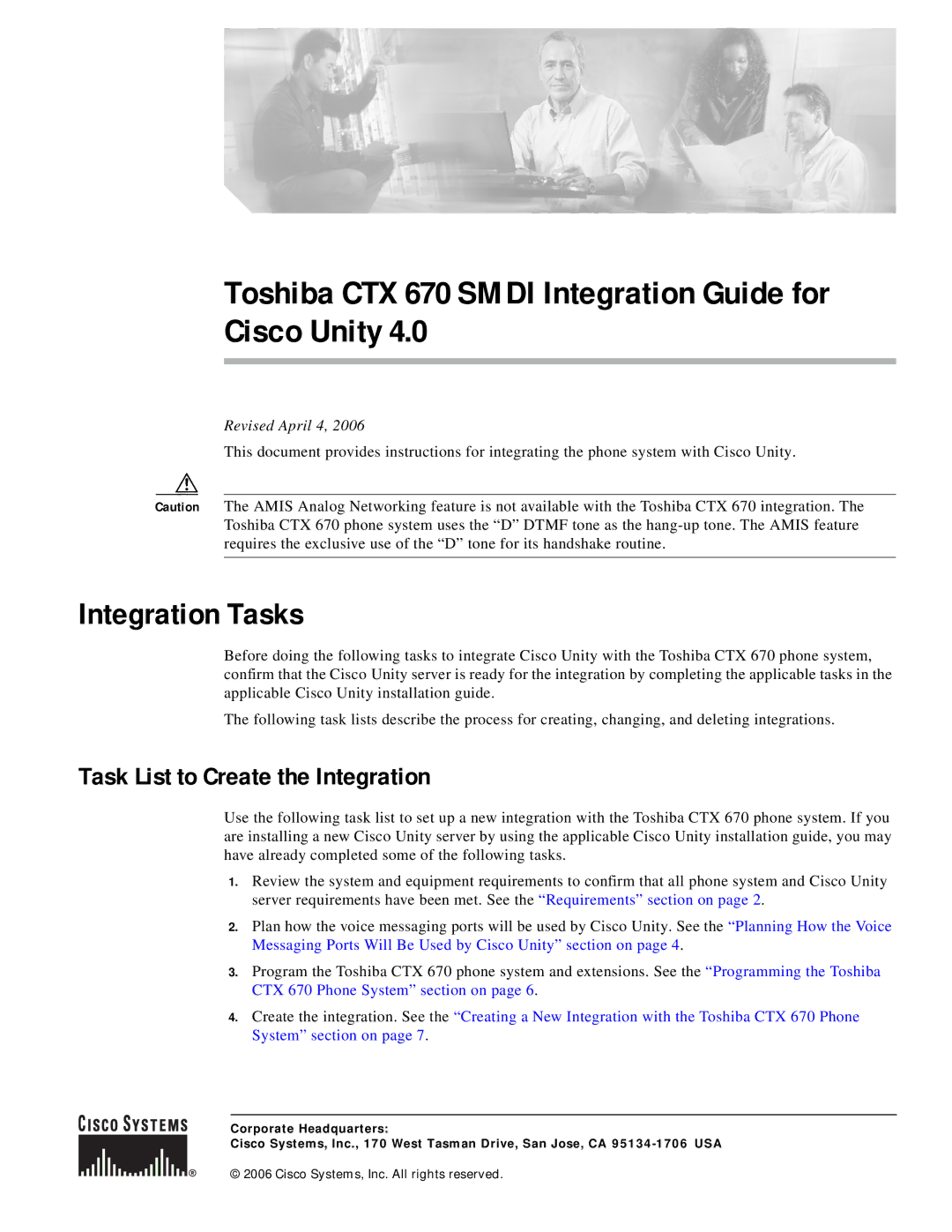
Toshiba CTX 670 SMDI Integration Guide for
Cisco Unity 4.0
Revised April 4, 2006
This document provides instructions for integrating the phone system with Cisco Unity.
Caution The AMIS Analog Networking feature is not available with the Toshiba CTX 670 integration. The Toshiba CTX 670 phone system uses the “D” DTMF tone as the
Integration Tasks
Before doing the following tasks to integrate Cisco Unity with the Toshiba CTX 670 phone system, confirm that the Cisco Unity server is ready for the integration by completing the applicable tasks in the applicable Cisco Unity installation guide.
The following task lists describe the process for creating, changing, and deleting integrations.
Task List to Create the Integration
Use the following task list to set up a new integration with the Toshiba CTX 670 phone system. If you are installing a new Cisco Unity server by using the applicable Cisco Unity installation guide, you may have already completed some of the following tasks.
1.Review the system and equipment requirements to confirm that all phone system and Cisco Unity server requirements have been met. See the “Requirements” section on page 2 .
2.Plan how the voice messaging ports will be used by Cisco Unity. See the “Planning How the Voice Messaging Ports Will Be Used by Cisco Unity” section on page 4 .
3.Program the Toshiba CTX 670 phone system and extensions. See the “Programming the Toshiba CTX 670 Phone System” section on page 6 .
4.Create the integration. See the “Creating a New Integration with the Toshiba CTX 670 Phone System” section on page 7 .
Corporate Headquarters:
Cisco Systems, Inc., 170 West Tasman Drive, San Jose, CA
© 2006 Cisco Systems, Inc. All rights reserved.
